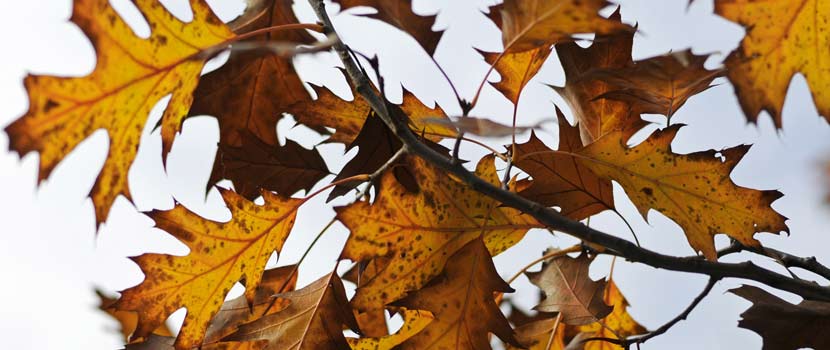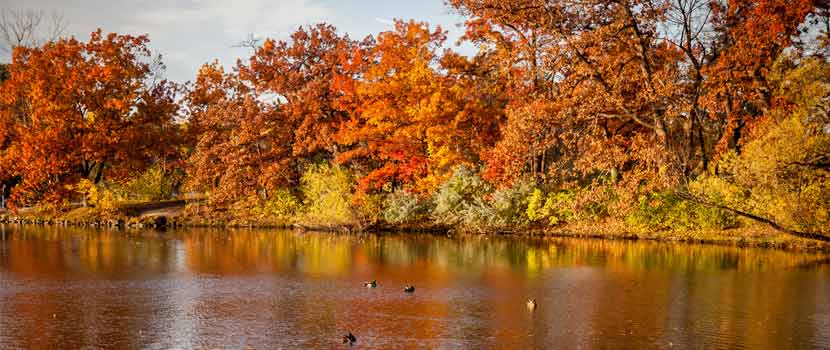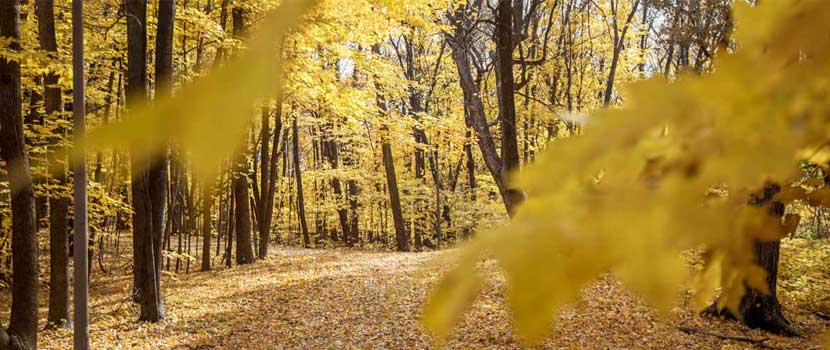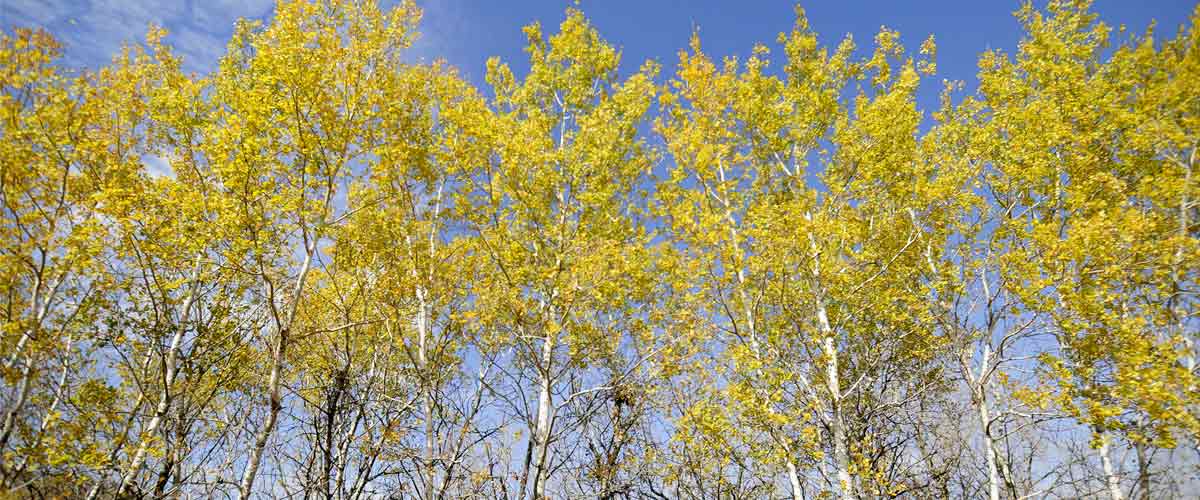
Autumn. What comes to your mind with this word? My mind pictures a chill in the air, a sense of restlessness with the onset of migration, and anticipation of leaves changing from green to a rainbow of colors for several fleeting weeks. By late August, spring’s once-vibrant green begins to fade. Why and how does fall's rainbow of color appear?
Green Pigments Give Way to Yellow and Orange
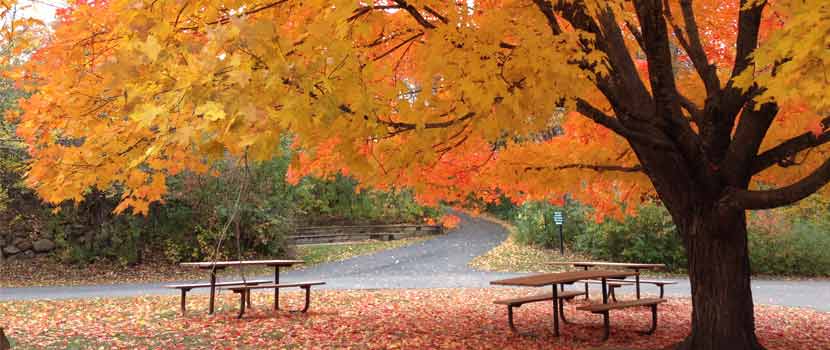
Chloroplasts are a tree’s powerhouse. They are found in each cell of a tree and provide the location for photosynthesis, which is how plants turn light into energy.
Each chloroplast contains chlorophyll, which captures and turns carbon dioxide, water, and sunlight into starches and sugars, providing the tree with energy. Chlorophyll also creates the leaves’ green color.
As days shorten and temperatures drop in autumn, chlorophyll breaks down. With the green gone, underlying yellow (xanthophyll) and orange (carotene) pigments are revealed. Other pigments like red and purple form as chlorophyll continues to degrade.
Reds and Purples: The Last Hurrah
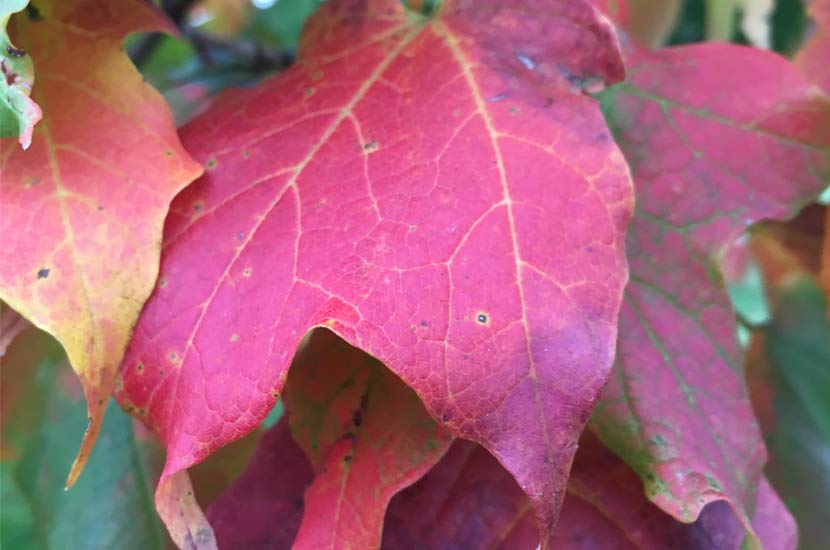
As the leaf prepares to separate from its branch, sugars and tannins are trapped and can form anthocyanin, creating a red or purple hue. The sugars and tannins are only present in a few tree species in this area, like sugar maple and red oak.
The amount of sunlight received by a tree influences the intensity of red. On a single tree the side receiving full sun may form brilliant red, while the side in shade may remain yellow.
Cool, frostless nights and warm sunny days create the perfect conditions for sugars to convert into anthocyanin and form bright red color. With all of the rain and cloud cover we've had recently, we may see fewer reds this season.
Sleeping through Winter
Once leaves drop, deciduous trees are dormant until spring. Rest assured these trees have formed buds containing flowers and leaves for next spring. Decomposing leaves add nutrients to the soil for new growth. Next year, as daylight and temperatures increase in spring, we’ll see the cycle begin anew.
See the Colors for Yourself
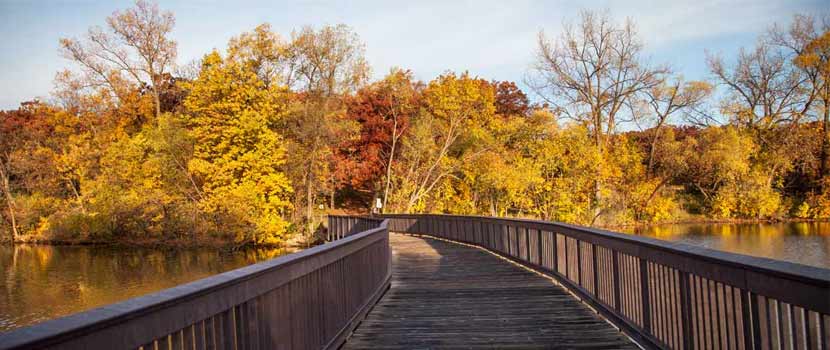
Fall is the perfect time to get outside and explore your favorite park. The air is cool, the mosquitoes are gone for now, and the color show is spectacular — even on rainy, overcast days.
About the Author

Laurel Sundberg is an Interpretive Naturalist at Lowry Nature Center. She has 17 years of experience in natural history, outdoor recreation and experiential education. She is currently working on research projects about pollinators and dragonflies. Outside of work, Laurel is a stand-up paddleboard and Nordic ski enthusiast and can frequently be found hauling an easel around to oil paint landscapes.
Related Blog Posts
Species Spotlight: Northern Red Oak Trees
By: Paul Kortebein
Northern red oak trees are one of the most common trees in our area. Learn more than you ever knew you wanted to know about northern red oaks in this not-quite-comprehensive-but-pretty-close post.
Parks for the Best Fall Colors
By: Jim Bradley
Fall is a gorgeous time to explore the parks. Get out and enjoy the season at a park near you.
Best Hikes for Fall Colors
By: Three Rivers Staff
Fall is the perfect time for hiking, and Three Rivers has endless options. From half-mile walks with lake views to more challenging hikes through maple forests, read on to see our staff picks for best fall hikes.
